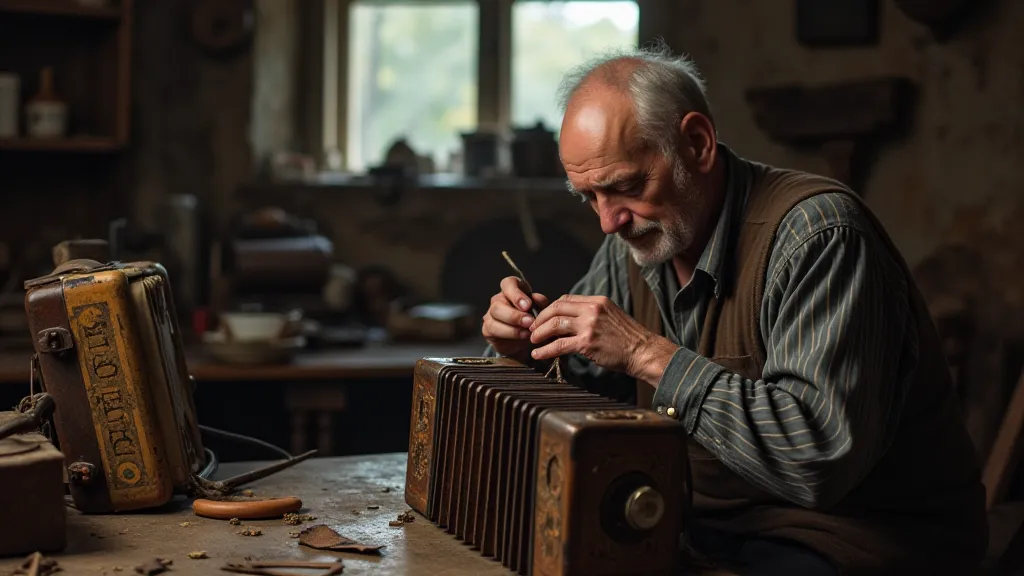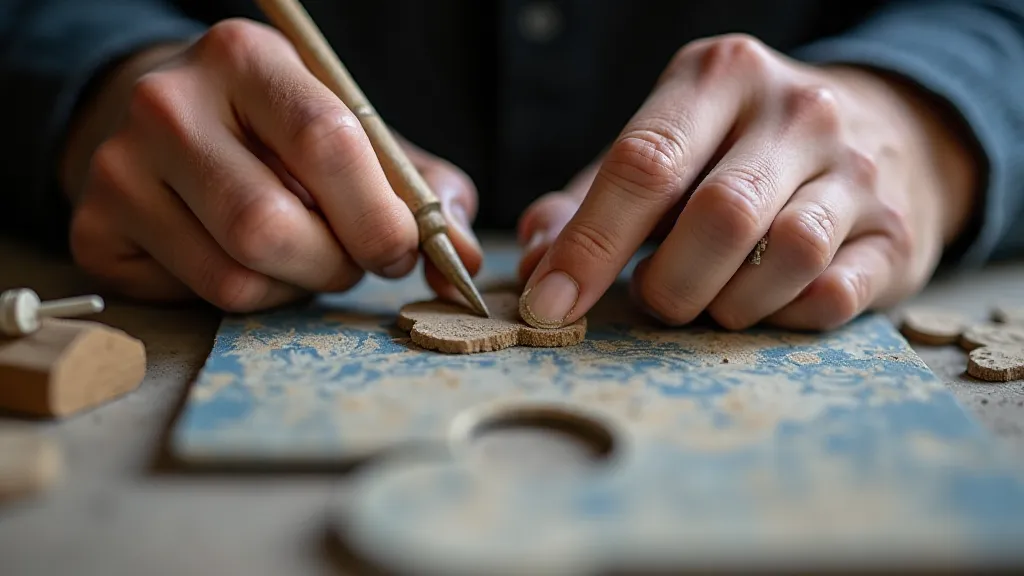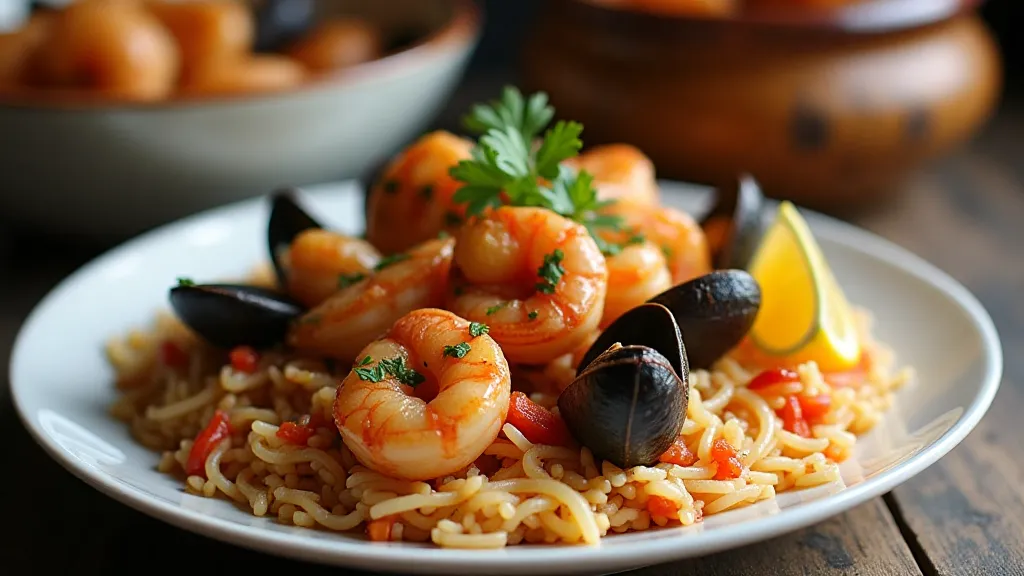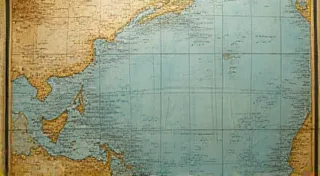The Golden Age of Gastronomy: How Portugal's Past Shapes its Present Plate
The aroma of cinnamon hangs heavy in the air, mingling with the sharp tang of citrus and the briny kiss of the Atlantic. It's a scent I associate with Portugal, a country where history isn’t just read in textbooks, but tasted in every bite. My grandfather, a melancholic but endlessly fascinating accordion player, used to tell me stories of Portugal’s glorious past, tales filled with brave explorers, bustling ports, and a hunger for the unknown. He’s gone now, but the echoes of those stories, and the taste of Portuguese cuisine, remain a powerful connection to my heritage. The act of preserving traditions, much like maintaining the intricate workings of an accordion, is deeply ingrained in Portuguese culture. It's a pursuit that recognizes that a dish is more than just ingredients; it's a living testament to a shared history and a lineage of culinary expertise.
Portugal's culinary landscape isn's a simple progression of local produce and traditional cooking. It's a vibrant tapestry woven with threads from across the globe, a direct consequence of its unprecedented era of exploration – the 15th and 16th centuries. Imagine, if you will, ships setting sail from Lisbon, not just seeking new lands, but carrying with them a profound and often unspoken desire: to gather spices, ingredients, and techniques that would transform the nation’s kitchens. This global exchange of flavors and techniques mirrors the complex culinary stories found in other cultures, such as the Creole palette, which itself tells a powerful story of resilience and adaptation. Just as Portugal's explorers charted new territories, the movement of people and ingredients across continents has created a unique blend of traditions, as profoundly revealed through the study of Spice Routes & Silent Migrations: The Creole Palette as a Cartography of Resilience. The result is a cuisine that resonates with echoes of distant shores, a culinary fingerprint that speaks of both origin and expansive influence.

The Spice Route's Inheritance
Before the Age of Exploration, Portuguese cuisine relied heavily on the available resources – fish, shellfish, pork, olives, and the wines of the region. While hearty and flavorful, it lacked the complexity and exoticism we associate with it today. The arrival of Vasco da Gama in India in 1498 changed everything. Suddenly, cloves, nutmeg, black pepper, cardamom, and chili peppers – unheard of luxuries before – began to find their way onto Portuguese tables. These weren’s just seasonings; they were symbols of wealth, status, and the power of Portugal’s expanding empire. The introduction of these foreign elements wasn't merely about adding flavor; it fundamentally altered the very essence of Portuguese culinary identity.
Consider carne de porco à la vincadeira (pork in wine sauce), a dish considered quintessentially Portuguese. While the pork itself is local, the cloves and cinnamon that define the dish’s warm, aromatic profile are direct imports from the East. Similarly, arroz de marisco (seafood rice), a comforting bowl of rice simmered with shrimp, clams, and mussels, owes its subtle sweetness and intoxicating fragrance to the influence of Asian cooking techniques and spices. The influence of Asian culinary traditions extends far beyond Portugal; similar exchanges have shaped the tastes of entire regions, imbuing rice paddies with a river’s distinct flavor. This mirroring effect, where geography directly influences culinary expression, can be keenly observed, for instance, in the influence of the Mekong River on the flavors of Southeast Asian rice paddies, which we can explore further through the article The River's Gift: How the Mekong Dictates Flavors in Southeast Asian Rice Paddies. This complex interplay of geography, migration, and tradition reveals a deep interconnectedness between cultures, evident in the shared culinary language spoken across continents.
Beyond Spices: A Global Exchange
The Portuguese weren't just importing spices; they were establishing trade routes and exchanging knowledge. The Brazilian manioc, a starchy root, became a vital ingredient in Portuguese bread and polenta. Tomatoes, initially regarded with suspicion (thought to be poisonous!), gradually found their place in stews and sauces. Even the humble potato, now a cornerstone of Portuguese cuisine, arrived from the Andes via Spain. The Portuguese were astute observers, not just of ingredients but of cooking methods. They recognized that the true power of culinary innovation lay not just in acquiring new ingredients, but in understanding how to use them, adapt them, and integrate them into existing traditions.
In Goa, a former Portuguese colony on India's western coast, the fusion of Portuguese and Indian culinary traditions resulted in a unique and captivating cuisine. Techniques like braising and the use of vinegar were adapted to suit local ingredients, leading to dishes like vindaloo, a fiery curry which, ironically, derives its name from the Portuguese word "vinha d'alhos" (wine and garlic). This process of cultural blending wasn’t a one-way street; it was a dynamic exchange that transformed both Portuguese and Goan cuisines, creating something entirely new and vibrant.
Craftsmanship and Preservation: Echoes of the Past
My grandfather’s accordion, a vintage Musette, sat proudly in a corner of our living room. Its bellows were meticulously cared for, its keys polished to a warm glow. He’s passed on, but that accordion serves as a palpable connection to the deep value placed on craftsmanship. The same meticulousness found in the construction of that instrument mirrors the pride with which traditional Portuguese recipes are preserved and passed down through generations. The dedication to preserving these traditions isn’t simply about maintaining culinary heritage; it’s about safeguarding a way of life, a connection to the past, and a sense of identity.
Think of the intricate tiles, azulejos, that adorn buildings across Portugal. Just as each tile is carefully handcrafted, traditional recipes are often guarded secrets, shared only within families. There’s a reverence for the process, a recognition that the best dishes are born not just from ingredients, but from years of practice and a profound understanding of flavor combinations. This focus on detail and quality echoes in other culinary traditions, often driven by a connection to a specific terroir. The fragrant bounty of Provence, for example, is inextricably linked to the lavender fields that paint the landscape in shades of purple and the techniques carefully cultivated over generations. The essence of Provencal cuisine is much like an expertly crafted dish: a reflection of a place and a commitment to the art of creation. The beauty and complexity of this relationship is further explored in the article The Lavender Fields' Kiss: Provence's Herb-Infused Cuisine and the Essence of Summer. This commitment to provenance and technique elevates a simple meal into an experience, a story whispered through flavors and textures.

Contemporary Portugal: Honoring Tradition, Embracing Innovation
Today, Portuguese cuisine is undergoing a renaissance. While traditional dishes remain beloved and fiercely protected, a new generation of chefs is reinterpreting them, incorporating modern techniques and locally sourced ingredients. This isn’s about abandoning the past; it’s about building upon it, celebrating the legacy of exploration while embracing the future. The challenge lies in striking a balance between honoring the past and innovating for the future – a delicate dance that requires both respect for tradition and a willingness to experiment. It's about understanding that culinary evolution is a continuous process, a conversation between generations of cooks.
You’re likely to find a pastéis de nata (custard tart) made with locally sourced eggs and a hint of vanilla bean alongside a meticulously researched recreation of a 16th-century stew. This duality – honoring the past, innovating for the future – is the hallmark of contemporary Portuguese gastronomy. It reflects a nation deeply aware of its history and confident in its ability to shape its culinary destiny. The intricate balance of tradition and innovation isn’t unique to Portuguese cuisine; it's a pattern observed across the globe, as chefs strive to push boundaries while respecting their heritage. This spirit of creative exploration ensures that Portuguese cuisine remains vibrant, relevant, and reflective of the nation’s evolving identity.
A Taste of Heritage
Portuguese cuisine isn’t just about food; it's a story – a story of explorers, traders, and cooks who, centuries ago, embarked on a culinary journey that continues to enrich the nation's identity. Each bite is a connection to that past, a reminder of the enduring power of cultural exchange and the importance of preserving traditions. Just as I strive to keep my grandfather’s accordion in tune, I'm committed to keeping the flavors of Portugal alive for generations to come. The spirit of preservation is crucial, as cultural heritage often exists in delicate balance, vulnerable to disruption, much like the intricate workings of a vintage instrument. The legacy of Portuguese culinary artistry is a treasure to be cherished and protected, a testament to the power of food to connect us to our past and inspire our future.






